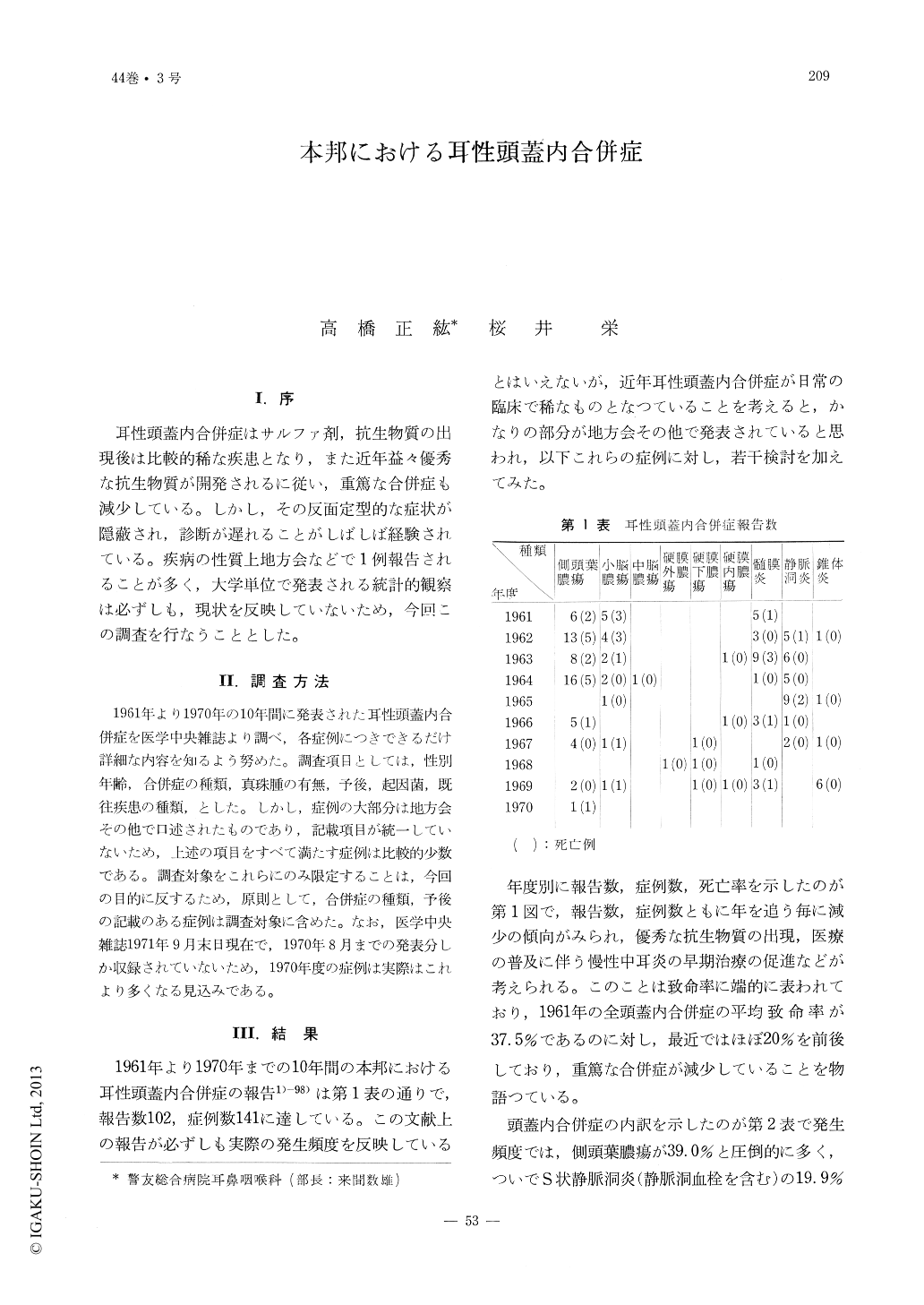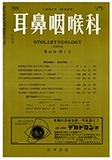Japanese
English
- 有料閲覧
- Abstract 文献概要
- 1ページ目 Look Inside
Ⅰ.序
耳性頭蓋内合併症はサルファ剤,抗生物質の出現後は比較的稀な疾患となり,また近年益々優秀な抗生物質が開発されるに従い,重篤な合併症も減少している。しかし,その反面定型的な症状が隠蔽され,診断が遅れることがしばしば経験されている。疾病の性質上地方会などで1例報告されることが多く,大学単位で発表される統計的観察は必ずしも,現状を反映していないため,今回二の調査を行なうこととした。
One hundred forty one cases of otogenic intracranial complications were reported in the literature of this country during the period of recent 10 years, 1961 to 1970. In studying these cases the following conclusions were drawn: (1) Although the number of cases of mortality due to otogenic intracranial complications decrease year by year, the average mortality was 24.8%.
(2) With regards to the pathology, the temporal lobe abscess appeared to be the most numerous, followed by sinus thrombophlebitis, meningitis and cerebellar abscess. The percent-age of the brain abscess amounted to 51.1%.
(3) The mortality was the largest in cere bellar abscess, temporal lobe abscess and meningitis which diminished in their number by that order.
(4) The incidence of morbidity is higher among the males compared to females; higher among the teen-age groups and becomes less with the advance of the age of the individual.
(5) Bacteriologically, infection with staphylococci or proteus appeared to be most prevalent, but, there in no difference of number in cases between gram-positive and gram-negative infections.
(6) Cholesteatoma is another factor that causes intracranial complication.
(7) The prognosis appeared to be generally good in intracranial complications following middle ear operations.

Copyright © 1972, Igaku-Shoin Ltd. All rights reserved.


